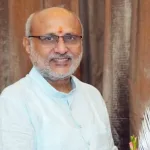Schooling is not merely about making students absorb concepts—it is about empowering them to become self-learners who not only know what to learn, but more importantly, how to learn. In today’s fast-changing world, education cannot be just about memorizing facts or recalling information for exams; it must cultivate curiosity, adaptability, and confidence, enabling students to face new challenges.
Too often, parents expect children to stay glued to their books, with little concern for whether they truly know how to learn. Here lies the responsibility of schooling—to guide students in navigating knowledge, nurturing in them the skill of learning how to learn.
The National Education Policy 2020 brings a much-needed change to our education system. It moves away from rote learning and emphasizes nurturing higher-order thinking skills. The policy stresses that education should empower students not only to acquire information but also to learn, unlearn, and relearn as the world changes.
It states clearly that education should “build character, enable learners to be ethical, rational, compassionate, and caring, while also preparing them for gainful, fulfilling employment.” Such broad goals can only be met when students become independent learners who think critically and adapt constantly.
What Does It Mean to “Learn How to Learn”?
Learning how to learn is the skill of managing one’s own learning—thinking, questioning, and adapting to acquire knowledge independently. It means enabling students to understand their own learning processes, strategies, and styles. It is about moving beyond memorization and grasping the methods that make learning more effective and independent.
A child who learns how to learn is capable of critical thinking, questioning, and reflecting on what works best for them. Such a learner becomes self-directed—able to seek resources, test ideas, and make connections between concepts. Instead of depending solely on the teacher, they become explorers of knowledge, confident enough to navigate new challenges on their own.
Why It Matters in Today’s World
The 21st century has transformed the way we live, work, and think. Careers are rapidly evolving; many jobs of tomorrow have not even been imagined today. Knowledge is doubling at unprecedented speed, and digital technologies are constantly reshaping how we access and use information. In this environment, memorized facts alone are insufficient—they quickly become outdated.
What endures, however, is the skill of how to learn. A student trained in self-learning can adapt, innovate, and thrive in new circumstances. They can unlearn obsolete methods, relearn updated practices, and continue to grow throughout their lives. In fact, learning how to learn has become as important as literacy and numeracy—it is the foundation for all other skills.
The Role of Schools in Cultivating Self-Learners
Schools are the places where curiosity can either be kindled or extinguished. Unfortunately, much of traditional schooling has focused on rote learning—drilling students to reproduce textbook content in exams. While this may yield short-term results, it does little to prepare children for the uncertainties of life beyond school.
To truly empower learners, schools must shift from a content-driven approach to a competency-driven approach. This involves:
- Encouraging students to ask questions and pursue inquiry.
- Valuing student’s opinion and acclaiming their smallest achievements.
- Ensuring grade appropriate optimisation of learning
- Designing projects that connect lessons to real-life situations.
- Promoting peer and self learning in the classroom settings.
Role of Parents and Society
Parents often see academic success as synonymous with hard study hours. While discipline and consistency are important, it is equally crucial to guide children toward smart learning. A child who simply spends long hours with books may still lack clarity, confidence, or independence in handling new concepts.
Parents can play a transformative role by:
- Valuing curiosity over just high marks.
- Encouraging children to read widely and think critically.
- Engaging in meaningful conversations rather than focusing only on results.
- Supporting schools that adopt innovative and student-centered practices.
Society, too, must shift its expectations. Success should not be measured solely by examination scores but by a student’s ability to solve problems, collaborate, and adapt.
Strategies for Teaching Students How to Learn
Developing the skill of learning how to learn is not abstract; it can be systematically nurtured through thoughtful practices. Some strategies include:
- Inquiry-Based and Project-Based Learning: Students investigate real-world problems, ask their own questions, and present findings. This strengthens problem-solving and research skills.
- Metacognitive Practices: Teaching students to reflect on their learning—what strategies worked, what didn’t, and why—builds self-awareness and independence.
- Collaborative Learning: Group discussions, peer teaching, and debates expose students to diverse perspectives and ways of thinking.
- Use of Technology: Guided internet research, online courses, and digital tools can help students explore beyond textbooks and learn independently.
- Alternative Assessments: Portfolios, presentations, self-assessment, and peer feedback help students evaluate their own progress rather than rely solely on exam marks.
- Encouraging Creativity and Curiosity: Arts, sports, and co-curricular activities are not “extras”—they are central to developing a flexible, adaptive mindset.
Conclusion
The ultimate aim of education is not to produce students who know many facts, but individuals who know how to learn anything, anytime, anywhere. Memorization may help a child clear an exam, but the skill of learning how to learn will empower them to face life’s ever-changing challenges with confidence and resilience.
Schools, parents, and society must work together to balance the focus between “what to learn” to “how to learn.” When children are guided to become self-learners, they do not merely succeed in academics—they grow into lifelong learners who carry the compass of curiosity, adaptability, and creativity wherever they go. And that, truly, is the essence of education.
(Author is a Teacher cum Teacher Trainer. Email: [email protected])








